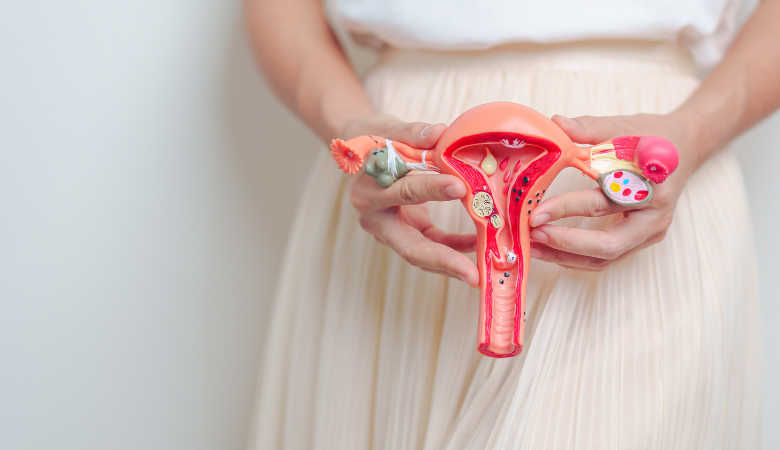Uterine fibroids are a fairly common condition in women, and they can occur for several reasons. Here are the causes and symptoms, and discover what treatment methods exist!
A uterine fibroid, also known as a uterine fibroid or leiomyoma, is a non-cancerous tumour that develops in the uterine muscle. Uterine fibroids can vary in size and cause no symptoms in some women, while in others, they cause discomfort and require treatment.
Possible Causes
- Variations in hormone levels, especially estrogen and progesterone, can play a significant role in the development of uterine fibroids. For example, uterine fibroids are more common in women of childbearing age when estrogen and progesterone levels are high.
- There is a genetic predisposition to the development of fibroids. Women who have a mother or sister with the condition are more likely to develop uterine fibroids.
- Certain environmental factors, such as diet (too much meat consumption, alcohol abuse) or exposure to chemicals, may contribute to fibroids’ development. However, research in this area is still ongoing to clarify these links.
- Other risk factors for developing fibroids include obesity, high blood pressure, lack of physical activity, excessive alcohol consumption, and diabetes.
Symptoms and severity vary
Uterine fibroids can cause various symptoms, and their severity can vary depending on the fibroids’ size, number and location. One of the most common manifestations of uterine fibroids is heavy and prolonged menstrual bleeding, which can lead to frequent changes in menstrual pads or anaemia due to blood loss.
Also Read: How to Treat Gastroenteritis and Its’ Symptoms?
Uterine fibroids cause chronic pelvic pain, which is felt in the lower abdomen or lumbar region. Some women may experience intense pain during menstruation or intercourse. Larger uterine fibroids can put pressure on the bladder or bowels, causing discomfort in the pelvic region.
Uterine fibroids sometimes cause lower back pain, and large ones can press on the intestines, causing constipation or bloating. A uterine fibroid can affect fertility or lead to complications during pregnancy, such as miscarriage.
Treatment Options
Treatment for uterine fibroids varies depending on the size of the fibroid, associated symptoms, the patient’s age and general health, and whether or not the patient wants to become pregnant in the future. Suppose the fibroid is discovered by chance during a check-up, for example, without the patient’s symptoms. In that case, the doctor may not recommend any treatment.
If symptoms are present, drug treatment, such as gonadotropin-releasing hormone agonists, hormone therapy, and nonsteroidal anti-inflammatory drugs, will be indicated. A minimally invasive procedure may also be recommended, such as uterine artery embolization (blocking the arteries that supply the fibroid, which reduces its size and symptoms), radiofrequency ablation, or focused ultrasound ablation (using heat energy to destroy the fibroid or slow its growth).
In some cases, a surgical intervention is necessary: either a myomectomy (the fibroid is removed, but the uterus is preserved) for smaller fibroids or a hysterectomy (the removal of the uterus altogether), in case of large fibroids and severe symptoms – after this operation, the woman can no longer have children.
Can fibroids be prevented?
There are no surefire ways to prevent uterine fibroids from developing. Still, some steps can be taken to lower the risk, such as avoiding exposure to chemicals, eating a diet with more vegetables and fruits and less meat, and limiting alcohol.
Also Read: What Diseases Can Influence the Weight Gain?

